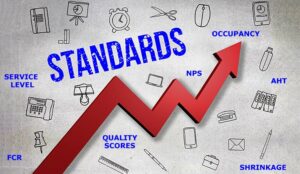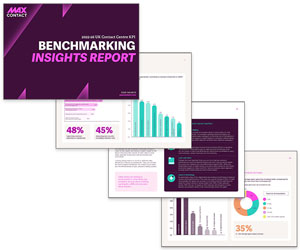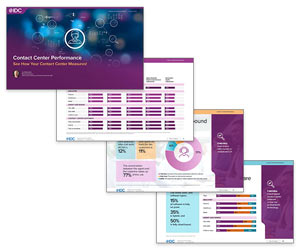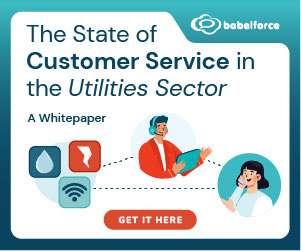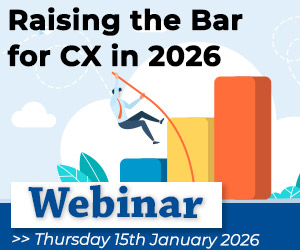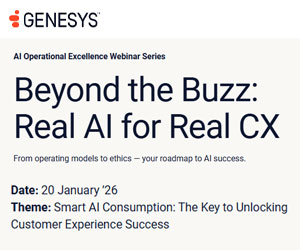In many contact centres, teams are measured on a wide range of performance indicators – some of which are complex, overlapping, and not always aligned with what matters most.
British Gas took a different path. By listening to their people and simplifying their approach, they’ve refocused their measurement strategy to benefit both customers and agents.
To find out more Call Centre Helper’s Jonty Pearce, spoke to John Connolly, Head of Innovation at British Gas, to learn how they are using metrics in their contact centre.
Video: How British Gas Are Using Metrics in Their Contact Centre
Watch the video below to hear John explain how British Gas are using metrics in their contact centre:
This VideoCast was filmed in 2011 at the ProtoCall One Genesys Workforce Management User Group.
With thanks to John Connolly, Head of Innovation at British Gas, for contributing to this video.
Three Ways British Gas Simplified Their Metrics
Lets take a look at the three ways British Gas simplified their metrics and the impact it’s had on their teams:
1. Listening First
The British Gas journey began with listening. For the first few months, the leadership team spent time talking to frontline staff – asking a simple question: What would you change if you were in charge?
“We spent the first three or four months of our journey just listening to our teams, and we stared at leads through our general manager. We sat down and you know in every opportunity to speak to our people so what’s the one thing you would do differently if you were me.
And the team overwhelmingly said: well you target me on 20 different things, you target me on things that don’t matter to me, they don’t matter to the customer, it’s all about you. So can you please, please, please stop beating us up and target us on the things that matter.
So we took a step back, and we thought wow okay, and I think what really landed it for us is that within one of these sessions one of the team actually said to us: does your manager beat you up on a daily basis around what you need to deliver.
And I think if you’re honest, if you’re part of a leadership team no. You know what your objectives are, you know what your goals are, you’re self-sufficient – you work on them throughout the year.
So, we got rid of all targets. The only target that our teams have at the front line is Net Promoter Score.”
The response was clear. Agents felt overwhelmed by too many targets, many of which felt disconnected from the customer and their day-to-day roles. The feedback was consistent: remove the noise, focus on what really matters.
2. Focusing on One Key Measure
In response, British Gas made a bold move. They removed all traditional contact centre metrics from frontline performance evaluation, as John explained:
“We reduced, or actually removed all of the typical contact centre metrics we measure our people on; so, handle time, commitment, sales performance, things like that. And we actually replaced that with one thing which is Net Promoter Score.
So, we think the most important thing is whether you know customers advocate the service that our teams provide so we stripped everything back.
The one exception is that we do expect them to put a third or a quarter of their conversations through to the customer feedback tool, which generates their Net Promoter Score. So that is literally all our teams are measured on now.”
This means there are no more targets for average handle time, sales performance, or commitment, and instead, there’s just one focus: Net Promoter Score (NPS).
NPS measures how likely a customer is to recommend the service they received. It’s calculated by subtracting the percentage of detractors (those scoring 0–6) from the percentage of promoters (those scoring 9 or 10).
“So, the NET Promoter Score that we use within our teams is the proportion of advocates if you like for the service that we provide.
So those customers that give us nine or ten out of ten for those conversations, against the proportion of detractors, so any customer that gives us a zero up to six score.
We work out the difference between the two. So, if you’re a zero you have as many fans at British Gas as you do detractors, and actually we’re in the positive now which is what we’re leading the way within the utility industry.
Certainly within our contact centre in Cardiff which is a great place to be.”
Agents are now asked to route around a third to a quarter of their calls through a feedback tool to generate NPS. That’s it – simple, clear, and focused on the customer.
3. Adding a Second Layer: Customer Effort
While NPS tracks advocacy, British Gas recognised that it doesn’t always reflect loyalty. To dig deeper, they introduced a second measure: the Customer Effort Score (CES).
Based on research from the Customer Contact Council, CES tracks how easy it was for a customer to get their issue resolved, as John continues:
“Well Net Promoter Score measures customer advocacy, so it’s how a customer feels about the service you deliver at a moment in time.
And that doesn’t necessarily guarantee that that customer may want to continue to be loyal with British Gas and repurchase more products with British Gas.
So, we think a better measure of loyalty, and this is off the back of research from the Customer Contact Council. Where fifty-four thousand customers were asked what would make them more loyal and actually, they said make my experiences effortless.
So, the customer effort score is something that originates from the Customer Contact Council. And actually, you know you measure on a scale of one to five if a customer gives you a five for an effort score, you’ve pretty much lost that customer already.
But if your customer gives you a 1 it means that you’ve given them an effortless customer experience”
It’s measured on a scale from 1 (very easy) to 5 (very difficult). A lower score shows the customer had a smoother experience—and is more likely to stay loyal.
British Gas now sees CES as a more accurate reflection of long-term customer retention.
If you are looking for more great insights from the experts, check out these next:
- 10 Expert Tips for Remote Working
- 4 Expert Tips for Your Contact Centre
- Understanding Shrinkage in Workforce Management
- How to Reward and Recognise Contact Centre Teams
Author: Robyn Coppell








